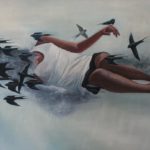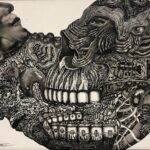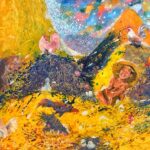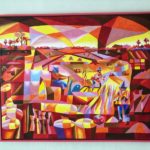
Young Thai Artists Exhibition: Area63 SNRU 2024
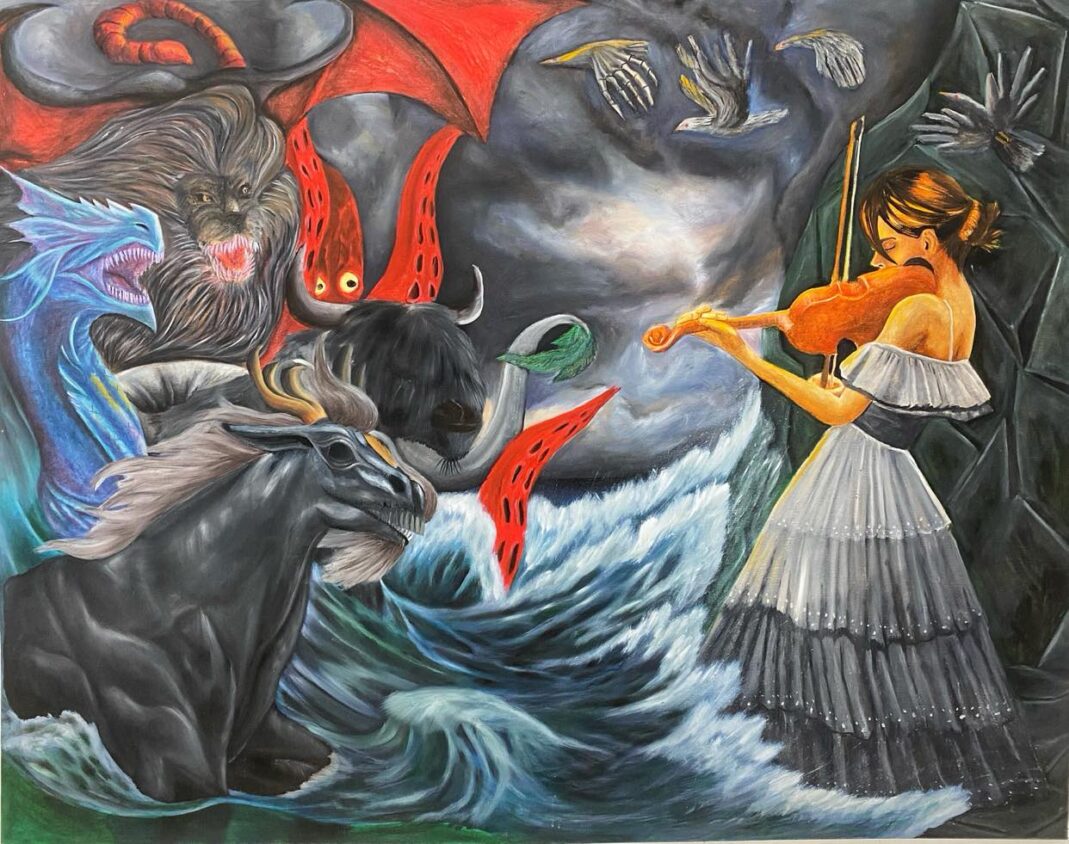
Young Thai artists are getting better every year, as is seen in a new exhibition of paintings at the Thongthawapee Art Gallery (หอศิลป์ทองทวาปี มหาวิทยาลัยราชภัฏสกลนคร) in Sakon Nakhon, Northeast Thailand.
The name of this vibrant art show is “Area63: Boundary Free Art of the 9 Styles”. It’s the senior thesis exhibition from art students at Sakon Nakhon Rajabhat University (SNRU).
Area63 refers to the art students’ freshman year 2563 (Thai Calendar), and the 9 styles refers to the 9 major styles of painting, which can be described as follows:
1. Realism: Realism in painting aims to depict subjects as they appear in everyday life, with attention to detail and accuracy. Artists strive to represent their subjects objectively, often focusing on depicting ordinary people, places, and objects realistically.
2. Painterly: Painterly style emphasizes the brushwork and texture of the paint itself, often resulting in visible and expressive strokes. Artists working in this style prioritize capturing the essence and energy of a subject rather than precise representation, resulting in dynamic and textured compositions.
3. Impressionism: Impressionism emerged in the 19th century, characterized by a focus on capturing the fleeting effects of light and atmosphere. Artists use short, broken brushstrokes and vibrant colors to create scenes that evoke a sense of spontaneity and immediacy, often depicting landscapes, urban scenes, and everyday life.
4. Fauvism: Fauvism, pioneered by artists like Henri Matisse and André Derain, is characterized by bold, non-naturalistic colors and simplified forms. Artists in this movement sought to evoke strong emotional responses through their use of color, often employing arbitrary and unrealistic hues to express their subjective experience of the world.
5. Expressionism: Expressionism emphasizes the emotional and psychological experience of the artist, often depicting distorted or exaggerated forms to convey inner feelings and turmoil. Artists use intense colors, dynamic brushwork, and symbolic imagery to express their subjective experiences and explore themes of angst, alienation, and inner conflict.
6. Cubism: Cubism, pioneered by Pablo Picasso and Georges Braque, revolutionized the representation of form and space in painting. Artists in this style fragmented subjects into geometric shapes and depicted multiple viewpoints simultaneously, challenging traditional notions of perspective and representation.
7. Abstract: Abstract painting emphasizes color, form, and line over representational accuracy, often departing entirely from recognizable subjects. Artists working in this style explore concepts of form, color theory, and composition to evoke emotional responses and stimulate the viewer’s imagination without reference to the tangible world.
8. Surrealism: Surrealism seeks to unlock the creative potential of the unconscious mind, often depicting dreamlike or fantastical scenes. Artists employ unexpected juxtapositions, irrational imagery, and symbolic motifs to explore the depths of human experience and challenge conventional reality.
9. Chinese: Chinese artists often seek harmony with nature and balance in composition, with themes ranging from landscapes and flowers to calligraphy and philosophical concepts. Traditional Chinese painting values spontaneity and captures the essence of the subject rather than precise representation.
The Area63 exhibition of young Thai artists from SNRU will run until March 7th at the university gallery. It’s open to the public.
- The Hidden Dharma of Thai Language & Culture - May 11, 2024
- The Royal Ploughing Ceremony in Thailand – A History - May 8, 2024
- Dying Well the Buddhist Way in Thailand - May 7, 2024

